Historic property deeds, also known as title deeds, are a fantastic source of information for house history and come in many forms.
Deeds are legal documents that record ownership of land and property and will typically include:
- a written description of the property and its boundaries
- information on the parties to the deed i.e. associated people
- a date
- the terms under which the property is held
- there may also be an associated location plan (more usual with deeds after the late 1800s)
There are three different ways to hold property (also known as tenure):
- freehold – for an indefinite period of time
- leasehold – for a specified or limited period of time
- copyhold – by a special tenure held from the lord of a manor by copy of court roll
Deeds are some of the oldest items in our archives, dating back 800 years. You can find them in a number of our collections, depending upon the type of tenure:


Manorial records
Manorial records may provide information on copyhold property as far back as the medieval period, although they are more common for the period from the 1600s until 1925, when copyhold tenure was abolished by the Law of Property Act 1922. They include court rolls, surveys and rentals and were usually, but not always, written in Latin before 1733. They may be found in our estate and parish record collections. The online Manorial Documents Register is the official index to English and Welsh manorial records. It provides brief descriptions of documents and their locations in public and private hands. The University of Nottingham Manuscripts and Special Collections website has an online guide to manorial records and the different types of documents they include.
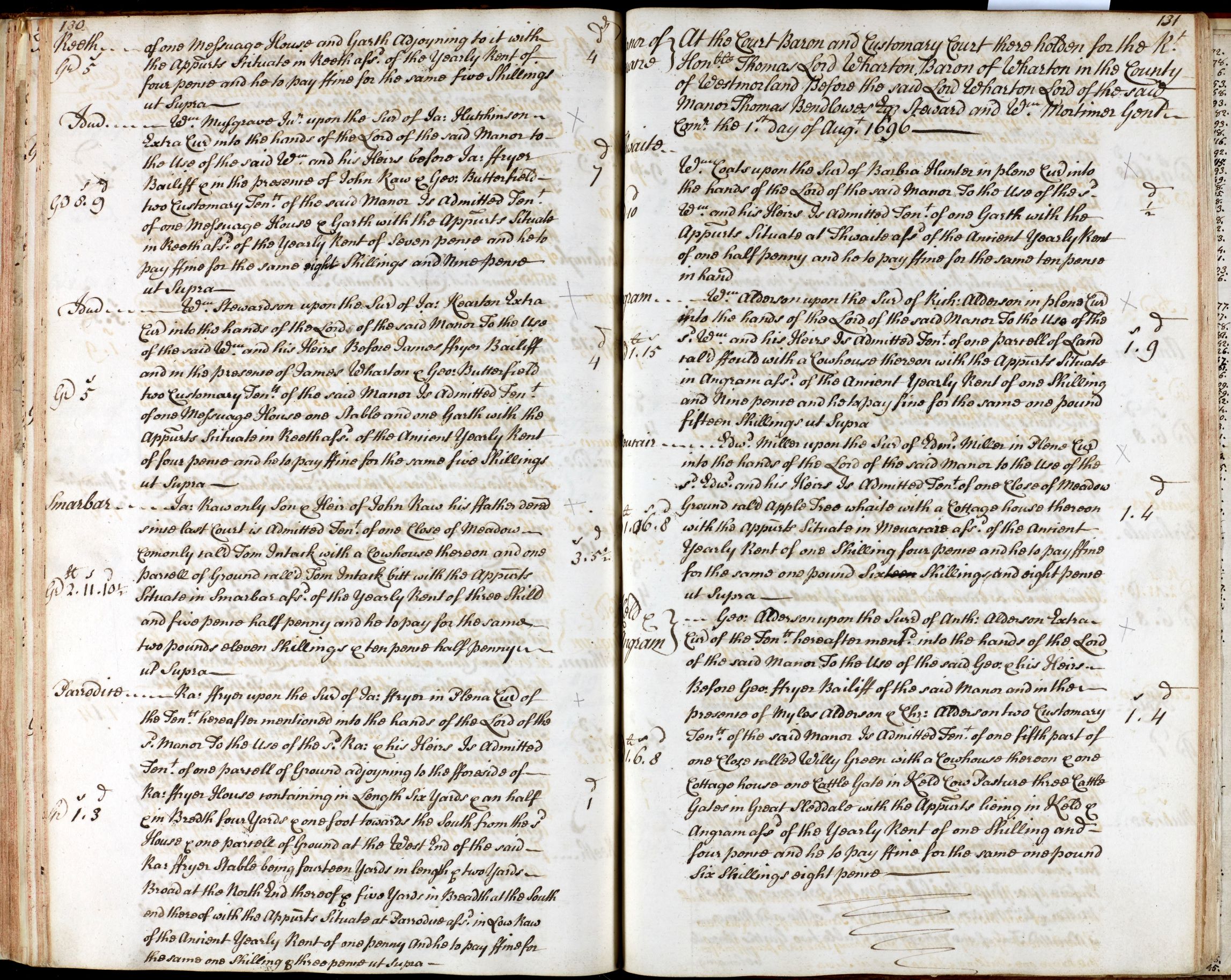


Left to right: Court book of the Manor of Healaugh & Muker, 1686-1701, showing entries from the Court Baron & Customary Court relating to cottage at Muker, 1 Aug 1696 & associated name index pages [ZA Book A, p130-131]
The manorial court records provide the most useful information for house history researchers. Transfers of land and property were mainly dealt with by the Court Baron and the details were enrolled (recorded) in the court roll or court book. The tenant of the manor’s proof of their holding was a copy of this entry in the court roll/book, which is where the term ‘copyhold’ originates.
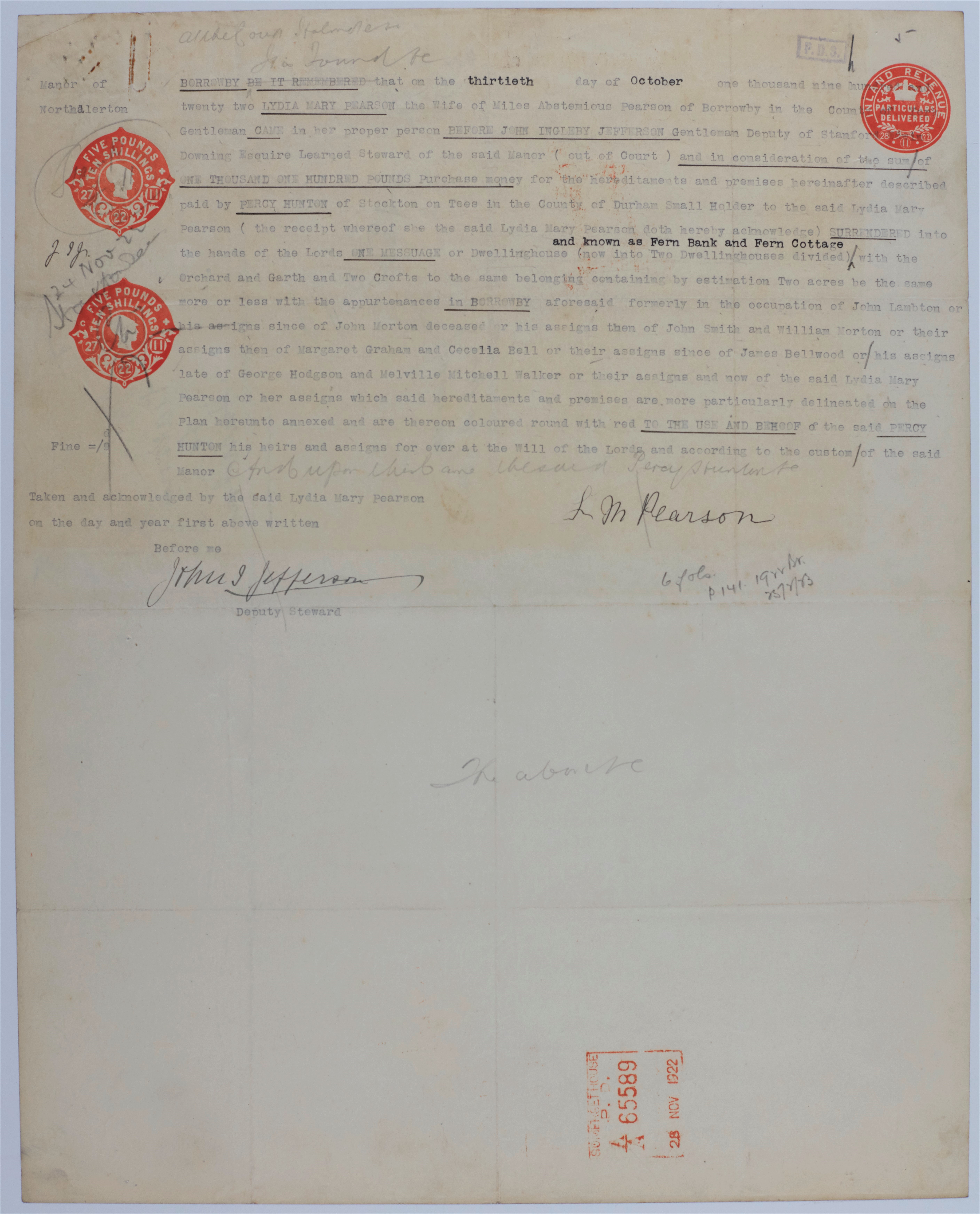

A late example of a copyhold deed from the manor of Northallerton, with plan, relating to Fern Bank & Fern Cottage, orchard, garth & crofts, Borrowby, 30 October 1922 – shortly before copyhold tenure was abolished [ZBD]
Estate and family archives
These collections may contain freehold title deeds, leases, abstracts of title, manorial records, and papers relating to the management of the estate and tenancies, as well as agents’ correspondence.

The medieval document above is known as a chirograph from the Latin word chirographum meaning handwritten. Unusually, both halves of the document survive in the same collection.
The intention of the chirograph was to produce two (or more) identical written copies of a legal agreement that could be retained by each party to the transaction and, if necessary, verified later by comparison with one another.
The word chirographum is written across the centre and the two halves have been separated by an irregular cut leaving a wavy edge. This practice gave rise to the description of the documents as ‘indentures’, since the edges were said to be ‘indented’.

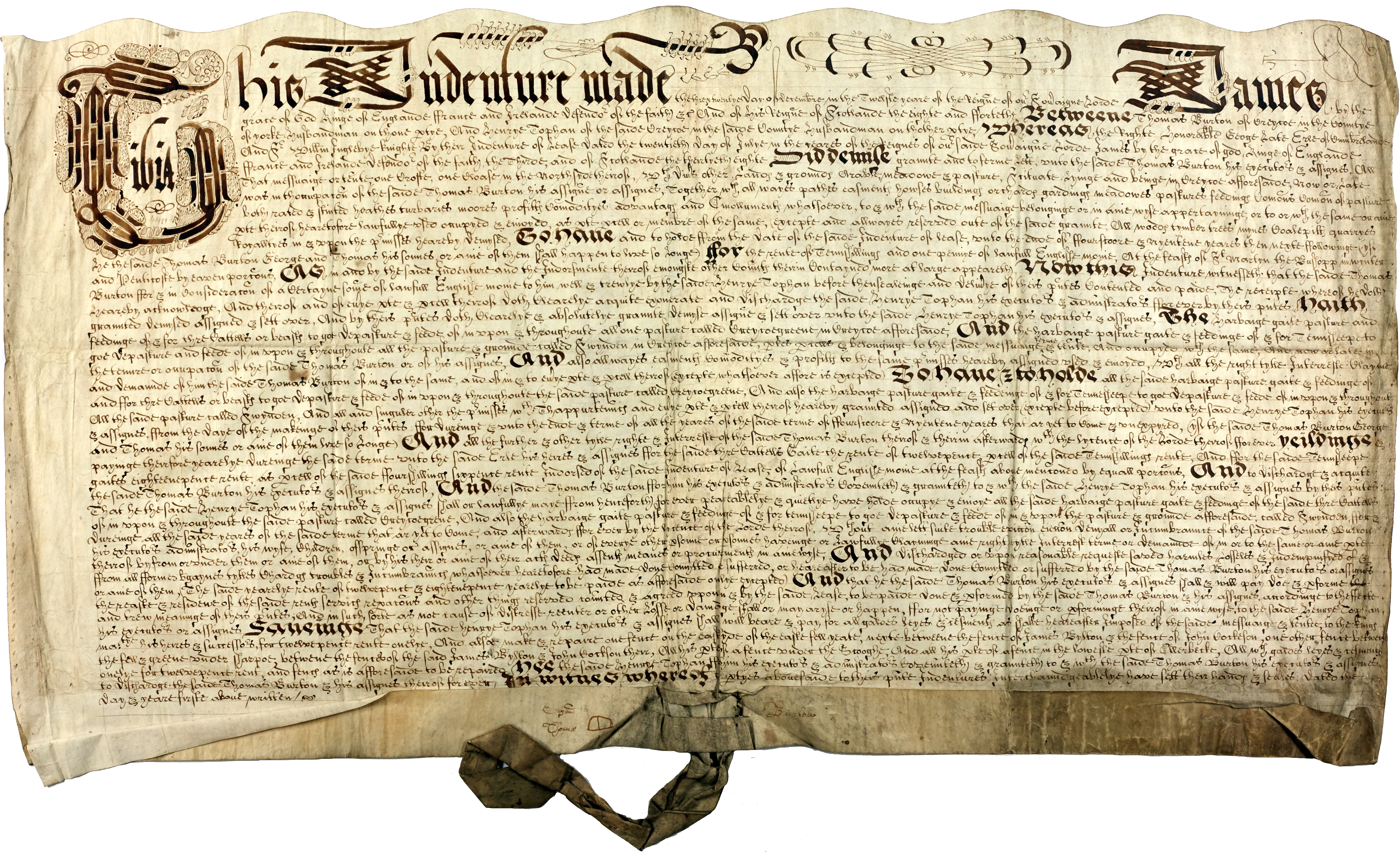
- Left: Agreement between two carpenters to build part of a house at Kirklington containing 4 chambers, kitchen, pantry & buttery, larder, kitchen & bow window, 28 Jul 1484 [ZKW NLI]
- Right: Assignment of lease for 99 years for property at Cracoe Green & Swinden, 23 Dec 1614 [ZBD(M) 3/1/3/1]
With time, as legal documents grew in length and complexity, it became impractical to fit two duplicate texts onto a single sheet of parchment. Therefore, it was more usual to make the two copies on two or more separate sheets, the top edges of which were still cut with a symbolic or matching wavy line, as in the documents below.
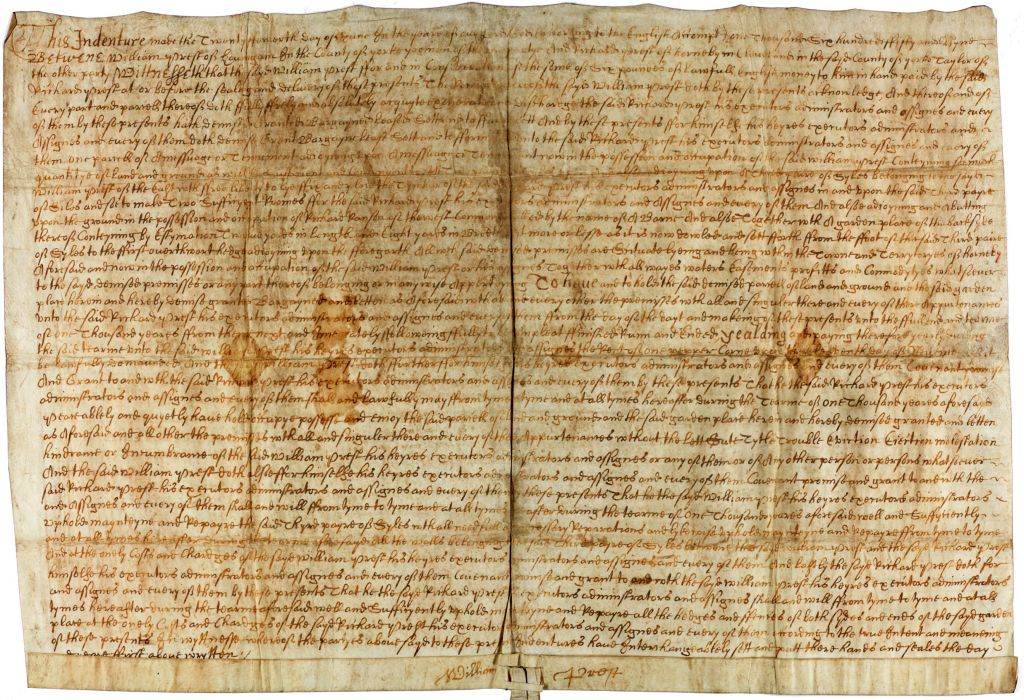
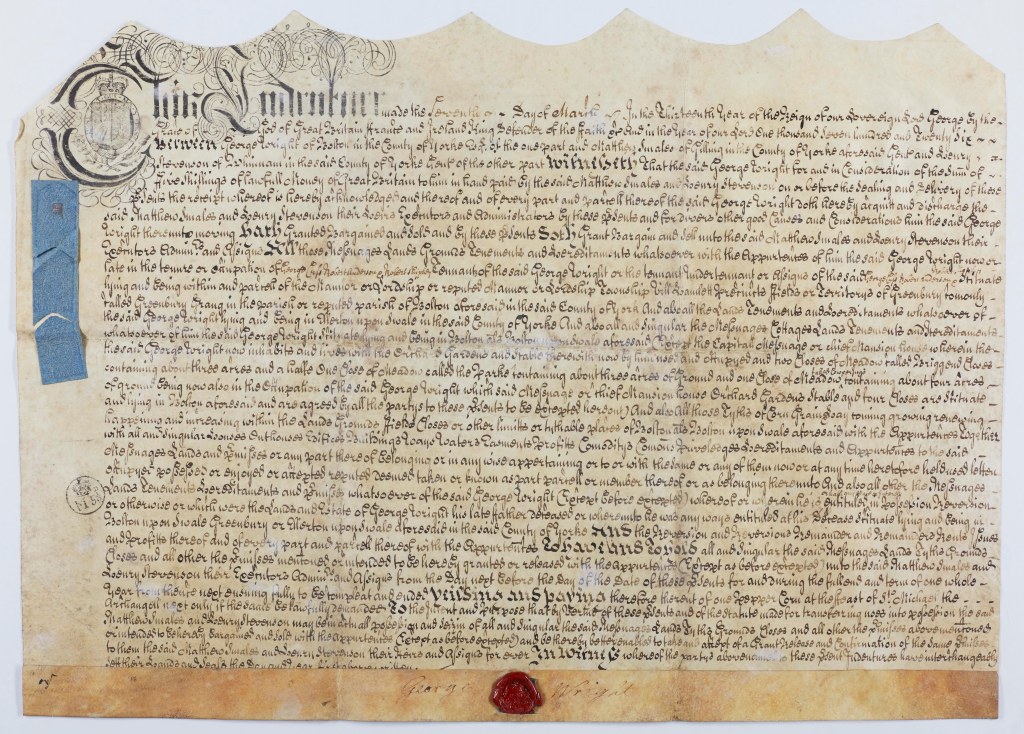
- Left: Lease for 1000 years for ‘a parcel of messuage’ (dwelling house) in Hornby concerning the addition of timber to adjoining ‘syles’ (timber cruck frames) to make two rooms, 24 June 1659 [ZE 70]
- Right: Mortgage for house & grounds in Greenbury & other property in Ellerton- and Bolton on Swale, 1727 [ZBL I 1/1/374]
North Riding Registry of Deeds (NRRD)
This is a unique collection of copies of deeds of freehold property from the historic North Riding of Yorkshire covering the period 1736 to 1970. For further information about the NRRD, see our other pages: introduction to the NRRD; NRRD FAQs and guide to using the NRRD.


Deed relating to the sale of a house and garden at Catterick, 5 December 1851 [NRRD HY/8/8]
